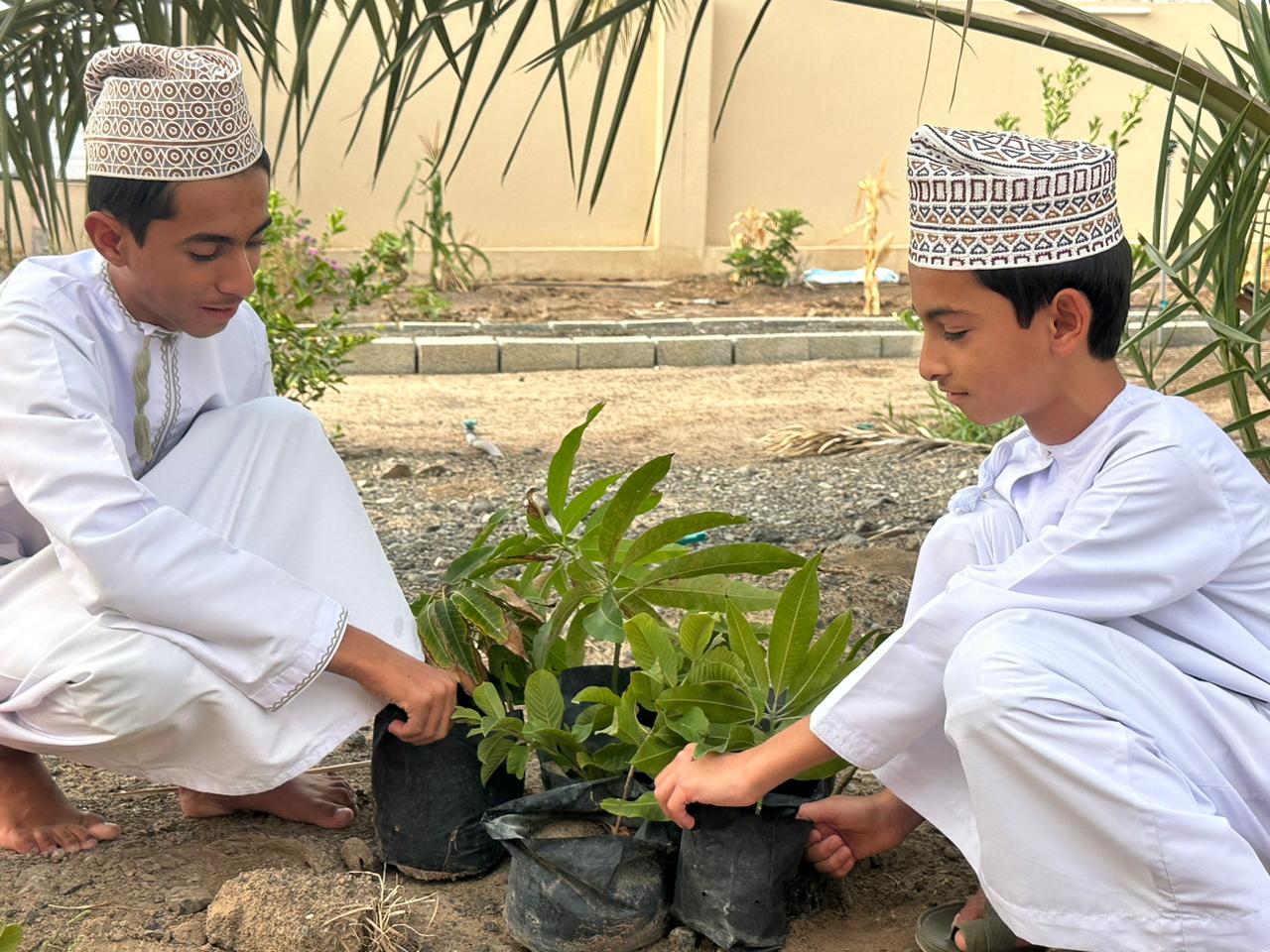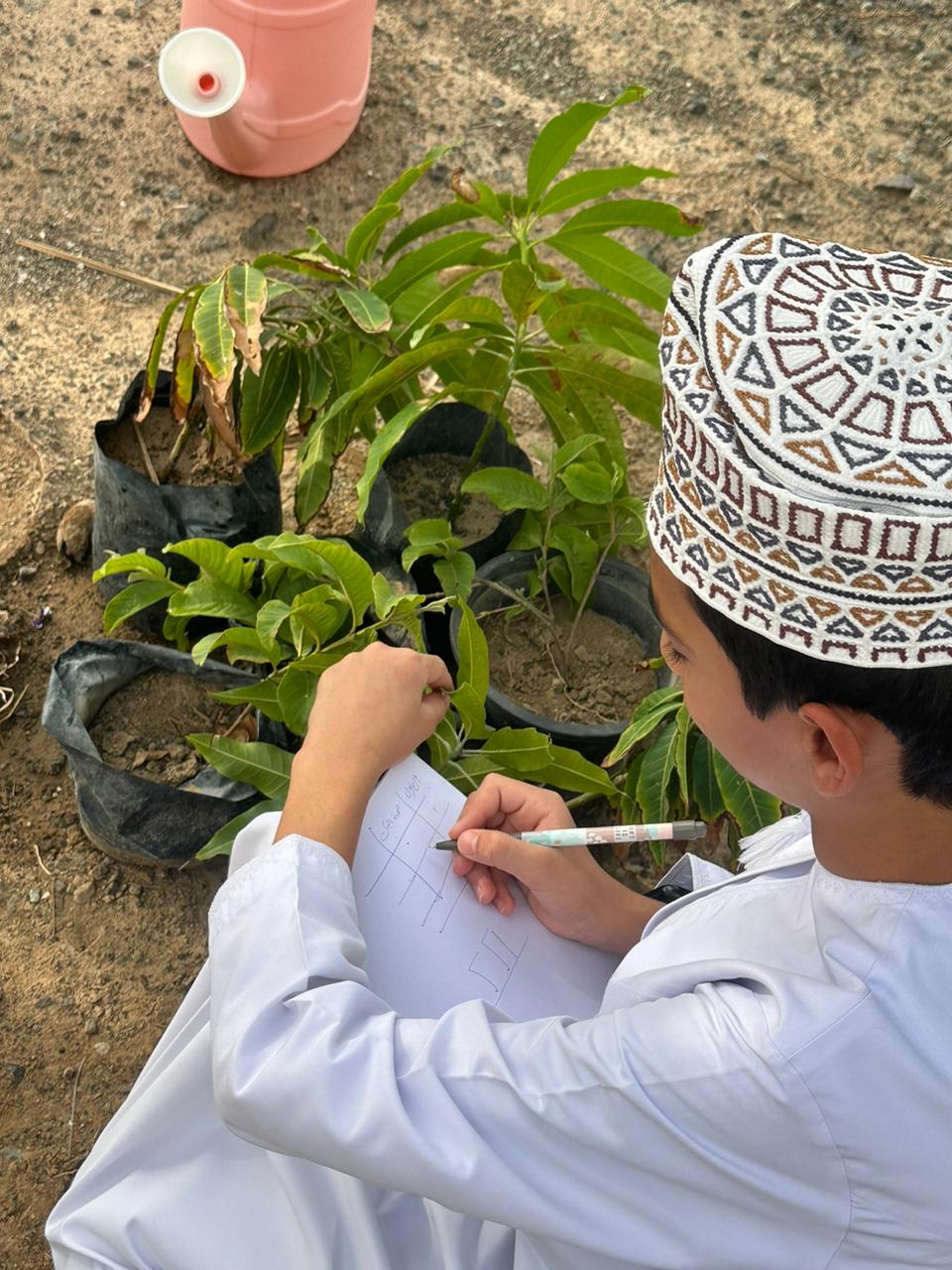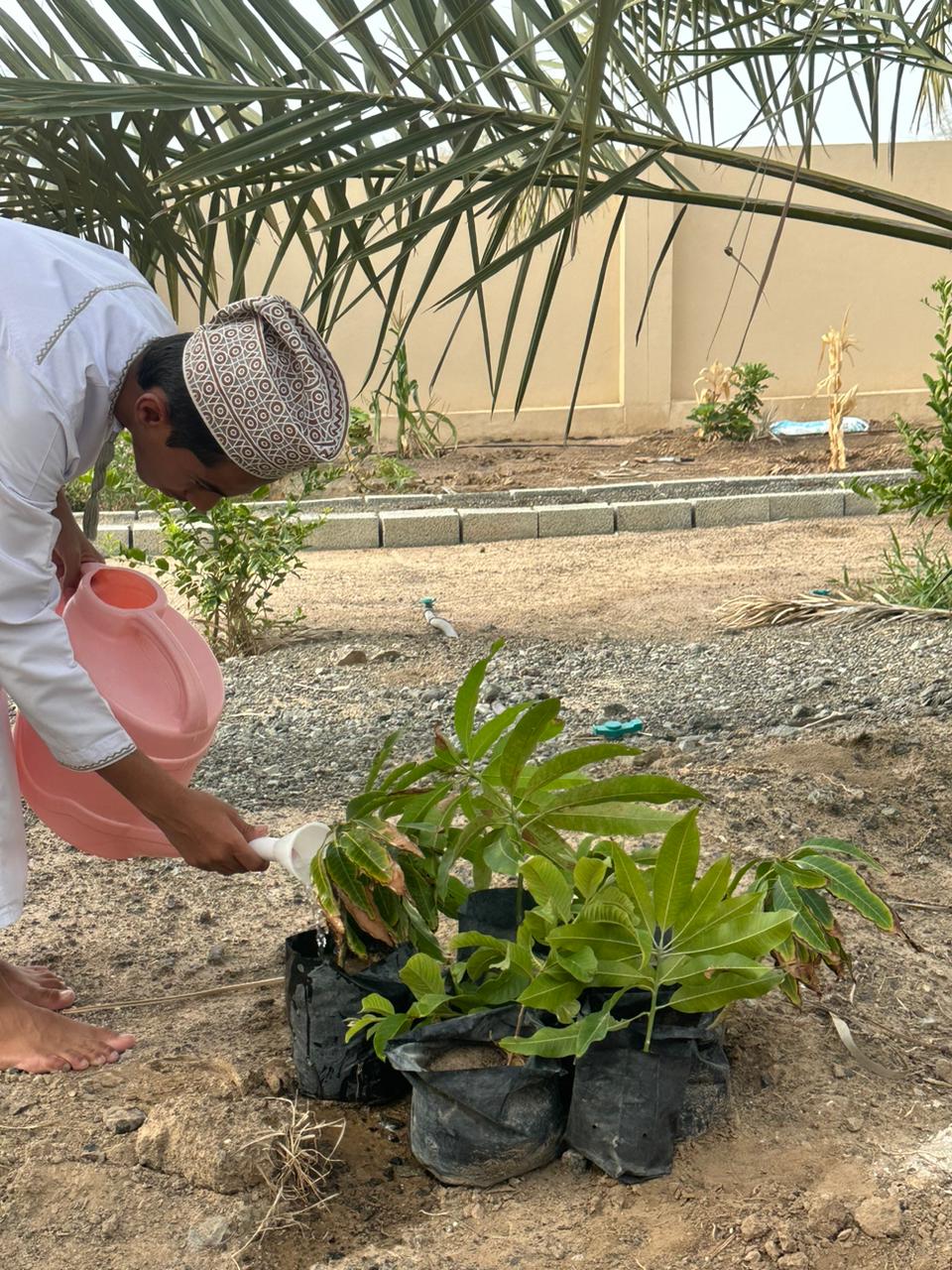Stars and STEM Stories
GLOBE Students Study the Impact of Water Salinization on the Growth of Crops

Water salinity is one of the main factors hindering agricultural development in desert regions due to the negative impact of soil salinity on the production of most agricultural crops. In a GLOBE-based learning activity, eighth grade students worked as a team to find out the impact of water salinization on the growth of agricultural crops through experiment.
Student outcomes include:
- Studying the properties of salt water and its impact on plants, its interaction with organic compounds and with humans and environmental life
- Finding solutions to the problem of water salinization and its pests
- Educating and raising awareness about the causes of water salinization by humans with modern technologies
- Developing general recommendations that benefit the groups affected by water salinization
- Teamwork
- Training on the use of salinity-measuring instruments
- Data recording and analysis
The research activity was divided into two sessions. The first session involved a lesson introduction, dividing the students into working groups, and a puzzle game. The second session included a presentation, the salinity activities themselves, a video, and presenting results. The students used bean, potato, and mango seedlings -- all plants available in their region. Preparing the seedlings actually took place two weeks before the activity. They also used fresh and salinated water.
After the students were divided into groups, a short story was read that talked about salinity issues for plants. Then a puzzle game was played; an image of weak plants appeared watered with water with dissolved salts and other healthy plants watered with fresh water, aiming to show the effect of salinity on the plant. The seedlings were dispersed to the groups as follows:
- Group 1: 4 seedlings, the bean plant is watered with fresh water for two weeks.
- Group 2: 4 seedlings, the bean plant is watered with water with 40% salts for two weeks.
- Group 3: 4 seedlings, the potato plant watered with fresh water for two weeks.
- Group 4: 4 seedlings, the bean plant is watered with water with 40% salts for two weeks.
- Group 5: 4 seedlings, the mango plant is watered with fresh water for two weeks.
- Group 6: 4 seedlings, Mango plant watered with water with salts by 40% for two weeks.

Each group measured the percentage of salts, acidity, stem length and greenness of the plant and recorded them, where they could then present their results and link the problem of water salinization in plant growth. Each group measured their plant's height and health for two weeks after the initial experiment. The students were able to discuss: which plants grew the most with which type of water; the effect of salts on plant growth, causes of water salinization; solutions to water salinization; properties of land that allows salt to move through water (groundwater); climatic trends that allow salt accumulation; human activities that contribute to water salinization; activities like logging that help absorb salt; water depletion and consumption, modern irrigation, modern treatments to water salinization (such as agricultural gypsum as a source of calcium dissolved in the soil that leads to the elimination of most of the harmful sodium ions); and use of water magnetization to reduce salinity.
Water salinity is one of the main factors hindering agricultural development due to the negative impact of soil salinity on the production of most agricultural crops. It is important to identify the nature of the effect of salinity on agricultural crops and the mechanism of this effect and the tolerance of different agricultural crops to salinity. Salinity of the water leads to a rise in the osmotic pressure in the soil solution, which makes the plant unable to absorb the water necessary for its vital activities as well as the scientific transpiration in the plant; The osmotic pressure in the plant increases by increasing sodium chloride in the soil solution, and this makes some plants wither and die because they do not have the ability to regulate osmotic pressure inside their body in order to overcome the external osmotic pressure.

Salt-tolerant crops are those that can regulate osmotic pressure within their body to certain limits through the collection and accumulation of organic matter such as sugars and proteins in their body. An example of this is the carrot plant, where the high concentration of the level of sugars in saline conditions is one of the basic components used by this plant to regulate osmotic pressure within its body. Students examined the samples prepared using GLOBE tools and revealed the percentage of salinity and its relationship with plant growth in their seedling samples.
Images courtesy Dr. Ishaq Al-Jabri, GLOBE Educator.





